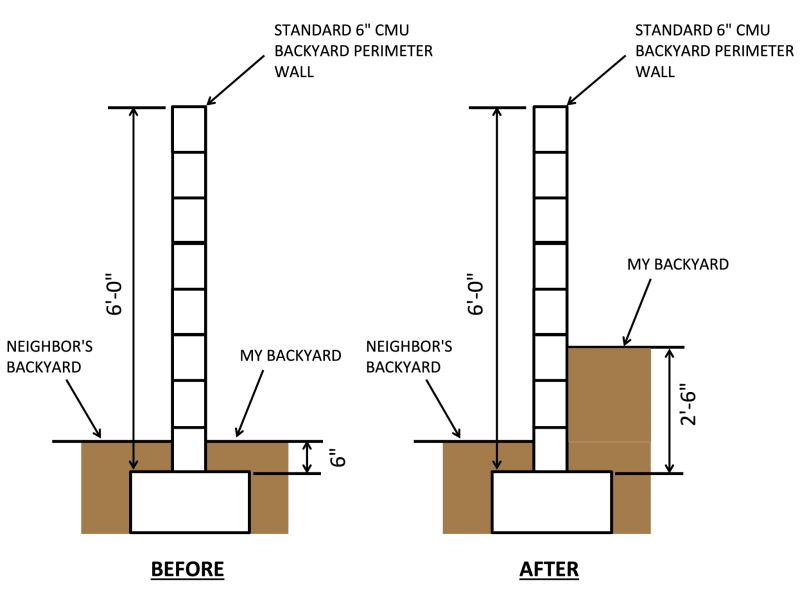Hey all, structural engineer for industrial facilities here, need some help from folks familiar with residential construction:
Currently leveling out a backyard which is stepped (2 foot elevation drop halfway across the yard). After leveling I am adding an additional 2 feet of soil up against one of the perimeter CMU walls. See below image:

I haven't got any details about the walls and not even sure if these are typically reinforced (1960s Southern California construction). I'd like to confirm the additional lateral load imposed by my 2 feet of soil won't cause any failure or bowing of the wall.
Anyone have typical details for these sorts of walls so I can run calcs?
If not, what are some conservative assumptions I can make about the wall construction (reinforced, unreinforced, min footing size) to check against additional load?
Currently leveling out a backyard which is stepped (2 foot elevation drop halfway across the yard). After leveling I am adding an additional 2 feet of soil up against one of the perimeter CMU walls. See below image:

I haven't got any details about the walls and not even sure if these are typically reinforced (1960s Southern California construction). I'd like to confirm the additional lateral load imposed by my 2 feet of soil won't cause any failure or bowing of the wall.
Anyone have typical details for these sorts of walls so I can run calcs?
If not, what are some conservative assumptions I can make about the wall construction (reinforced, unreinforced, min footing size) to check against additional load?
